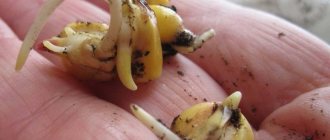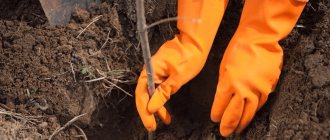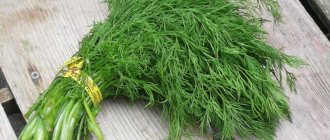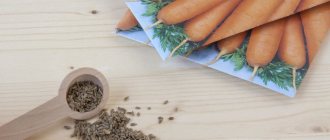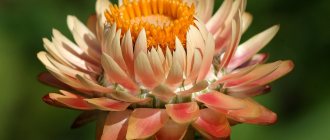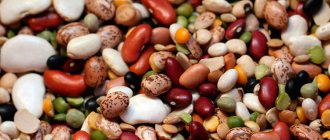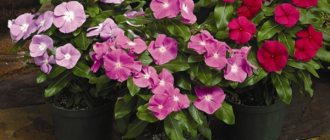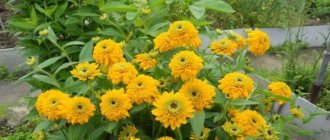Many gardeners try to plant this most ancient grain plant in their summer cottage, so its tasty and healthy cobs are liked not only by adults, but also by children. However, not everyone manages to grow this southern and heat-loving crop.
However, if you follow basic agricultural practices, you can still get a decent corn harvest; you just need to follow the simple advice that you will receive if you carefully read this material.
Note! Next we will talk about the rules for sowing and growing sweet corn, not fodder corn .
When to plant corn seeds in open ground, in what month
This crop loves warmth and good lighting, so it is not recommended to rush and sow it too early. When is the best time to plant corn?
Sowing can be done only when the soil in the open ground warms up to 12-14 degrees Celsius (the first 10 centimeters of the ground). If the ground does not warm up enough, the seeds will germinate slowly and unevenly, many of them may not germinate, and they are also more susceptible to wireworm damage.
An important criterion when choosing the time for the procedure is the risk of return frosts, which can destroy your young seedlings. Therefore, you can sow only after the risk of return spring frosts has disappeared. Seedlings with true leaves can withstand a negative temperature of -2 degrees, but at a lower temperature they will certainly die.
It is quite difficult to name the most favorable month and decade, because the climate in our country is very different (and therefore, warmth occurs at different times, as well as a different risk of return frosts). The following deadlines can be roughly distinguished:
- In the middle zone (Moscow region) - it is optimal to plant in the second half of May.
- In Siberia, the Urals, and the Leningrad region , it is better to plant the crop on the site in early June.
- In the South (Krasnodar Territory (Kuban)) you can sow in the second half of April.
Note! In the northern regions, it is better to sow corn first as seedlings, and then plant it in open ground. Otherwise, there is a risk that the crop will not have time to ripen.
It is necessary to plant seedlings 1 month before planting the plants in open ground. Therefore, choose the timing for sowing at home based on the climatic conditions of your region.
Corn planting dates according to the lunar calendar
A calendar based on the cycles of the moon has more than once come to the aid of summer residents in gardening matters. It is believed that if you perform a particular procedure at a certain time, you can achieve a better result. But there are also days when it is better to refuse to carry out gardening activities. So, we can distinguish the following dates for planting corn according to the Lunar calendar 2020:
- Favorable days: in April - 1, 2, 7, 24, 27, 28, 29;
- in May - 4, 5, 6, 27, 28, 29;
- in June - 1, 2, 3, 4, 22, 23, 28, 29, 30.
- in April - 8, 15, 16, 17, 23;
Corn harvesting and storage
The timing of corn harvesting depends not only on the variety chosen, but also on the purpose for which you grow it. Young and juicy cobs are suitable for preservation, those that have fully ripened on the bushes are suitable for drying, and both options are suitable for freezing.
Corn has two stages of ripeness - milky and biological. The first occurs when the grains are white-yellow, the leaves are still green, and the hairs on the cob are white with beige tips. The second is characterized by yellow grains, dry, parchment-like leaves on the cob and brown hairs.
In industrial conditions, corn cobs are stored in piles at low temperature and humidity, but at home, corn is easiest to freeze. This is done both with whole cobs and with individual scalded grains. Ripe corn can be stored in the refrigerator for up to 2 weeks, but you need to ventilate it periodically to prevent rot from developing on the cob due to increased humidity.
Now you know everything you need to grow this crop, but we think you’ll figure it out yourself how to cook corn correctly.
How to choose a good place to plant and grow corn
A correctly selected place for planting crop seeds plays an important role in the successful cultivation of corn in open ground. Thanks to optimal conditions, suitable soil, favorable predecessors and neighbors, you can grow the most delicious crop.
Criteria for suitable location and soil
Good full lighting is very important for light-loving corn. In shade or partial shade, the taste and size of the cobs will leave much to be desired.
The culture does not tolerate waterlogged areas. Therefore, avoid places with close groundwater, lowlands in which moisture accumulates.
Corn will grow best in light, neutral, fertile soil.
Crop rotation: good and bad predecessors
To achieve maximum results and get a good harvest, it is recommended when choosing a location to pay attention to crop rotation (alternating crops on the site).
What is the best time to plant corn? Good predecessors : melons (for example, cucumber, watermelon, pumpkin, melon), cabbage, tomatoes, potatoes, grains, green manure.
After what is it not recommended to plant the crop? Bad predecessors are corn itself (sugar and feed), and millet.
Choosing neighbors in the garden
Growing corn is acceptable alongside many crops. It can especially be grown on the northern side next to heat-loving crops that do not respond well to drafts and wind.
It is believed that the best combination in a garden bed is corn and cucumbers. It is also good to plant the crop next to the pumpkin.
Transplantation to a permanent place
Grown plants are transferred to unprotected beds at the age of 20-30 days. Moreover, in southern regions with a hot climate, transplanting younger seedlings is possible. In Siberia and the Urals, it is better to leave corn at home for a longer period so that it gets stronger. Plants are ready for replanting if they have 3 well-developed leaves and the root system has entwined the earthen ball.
Replanting begins after warm weather sets in, when there is no longer a threat of return frosts. For corn, choose a well-lit area, sheltered from the wind on the north side. The groundwater in this place must lie deep. Otherwise, the likelihood of rot developing on the roots increases. If the soil is too dense, the structure is improved by adding river sand or compost. For proper development of cereals, the soil must be neutral or slightly acidic.
Corn produces a good harvest on fertile soil. To do this, humus and superphosphate are introduced in the fall while digging the site. When choosing a place for a garden bed, take into account the rules of crop rotation. Corn grows well in areas where peas, beans, beets, potatoes, and carrots were previously planted.
Seedlings are planted in rows. Holes corresponding in size to the volume of the seedling pot are dug at a distance of 50 cm from each other. The same interval is maintained between rows. After planting the seedlings, the soil is compacted and slightly moistened. When the moisture is absorbed, the ground is covered with a layer of mulch made from sawdust, straw, and dry grass.
How to properly prepare a bed on a site for sowing corn
Before sowing corn seeds in open ground, it is necessary to prepare a bed. The preparation scheme is extremely simple: you need to dig up the area , and it is advisable to add fertilizer (this is especially true if the soil is not fertile enough).
It is recommended to do digging in the fall (in this case, it will be necessary to loosen the soil in the fall) or in the spring 4-2 weeks before sowing corn. You need to dig up the area using the bayonet of a shovel.
Mineral fertilizers are applied during digging. According to the instructions, you can apply the complex fertilizer Nitroammofoska, which already contains nitrogen, potassium and phosphorus. You can also add macroelements separately, for example: Superphosphate (30 grams per square meter), Potassium sulfate (20 g per square meter), Ammonium nitrate (30 g per square meter).
Note! If you are going to apply superphosphate, then you need to do it in the fall, because the substance needs time to become available to plants.
For adherents of organic farming, instead of mineral fertilizers, you can add organic matter: compost or humus (they contain nitrogen) about 5 kilograms per 1 square meter, wood ash (contains potassium) 200 g per square meter, bone meal (phosphorus) 100 g per square meter. m.
Advice! 1-2 weeks before sowing corn seeds, it is necessary to loosen the soil with a rake. After this, it is recommended to cover the bed with film or agrofibre or make a greenhouse on arcs (thanks to this, the soil will warm up and the seeds will sprout faster after planting).
Choosing a location and preparing a bed for planting corn
In order for the plant to actively grow, it is necessary to carry out several preparatory procedures in advance. This will help in the future to achieve the desired harvest.
Place on site
A place for planting corn should be well lit.
Corn is very demanding of light, and if you plant it in the shade, noticeably fewer leaves and ears will be produced, and their quality will noticeably decrease.
It is very important to take into account the fact that corn does not like wet (flooded) areas and close groundwater.
And also due to the fact that this is a very heat-loving plant , it would be ideal to plant it on high (warm) beds .
After what crops to plant?
Corn is not very demanding of its predecessors.
The most suitable predecessors for planting corn are the following crops: grains, legumes (in short, green manure ), melons (pumpkin, watermelons, cucumbers), vegetables (tomatoes, cabbage) and potatoes.
The worst predecessors , after which it is undesirable to plant corn, are corn itself (especially feed) and millet.
Crop rotation rules should be followed in order to prevent the spread of common pests and diseases.
Best neighbors
Often, gardeners prefer to grow corn in the countryside together with other crops, so to speak, using it as a support and protection from drafts and cold northern winds.
So, ideal neighbors for corn are cucumbers, which will bear fruit better thanks to the diffused light that the long and narrow leaves of corn provide.
Video: planting cucumbers and corn together
You can also plant legumes and the same pumpkin nearby (the wide leaves will protect the roots of the crop from overheating and prevent weeds from growing).
What soil is needed and how to prepare the bed
Corn is not very (moderately) demanding of soil, so it will grow just fine in light, fertile soils.
By the way! The plant will be able to grow in slightly acidic soil, but not below pH 5, otherwise it will begin to get very sick.
Preparing a site (a bed for planting corn) involves digging it up with a spade in the fall and/or spring, a month before the procedure is supposed to take place.
In the fall, it is advisable to plow (dig up) the area with a spade bayonet (about 25-30 cm), and in the spring again, but only loosen it by 1/2 of a spade bayonet (about 12-15 cm).
At the same time, it is recommended to apply a complex of mineral fertilizers for digging in the following proportions for each square. meter of plot:
- Superphosphate - 30-40 g (required in autumn).
- Potassium sulfate - 20-30 g (preferably in autumn, but possible in spring).
- Ammonium nitrate - 30-40 g (in spring). Or urea (carbamide), but it is absorbed by plants more slowly than ammonium nitrate.
If you haven’t prepared the bed at all in the fall, then you can apply a complete complex mineral fertilizer - nitroammophoska (again, 30-40 grams per 1 sq.m).
If you are a supporter of organic farming (and not only), then as a nitrogen fertilizer you can add 5-8 kg of humus or compost per 1 square meter in the fall (or spring). m. beds (depending on the degree of fertility or depletion of your soil), potassium - wood ash (100-200 grams per 1 sq.m.), phosphorus - bone meal.
And 3-7 days before planting, it is very good to disinfect the soil by spilling it with a solution of Fitosporin .
At about the same time (a week in advance), in order for the soil to warm up faster, it can be covered with film or white non-woven covering material. As an option, immediately make a temporary greenhouse on arcs .
Preparing corn seeds for sowing
Note! Corn seeds can be sown dry without pre-sowing treatment.
Any of the following processing methods are optional and should be performed as desired.
However, preparing the seed for planting will improve germination (that is, you will get friendly and quick shoots).
First of all, it is recommended to visually examine the seeds. All damaged or deformed specimens should be discarded.
Then it is recommended to carry out disinfection ; the procedure will reduce the risks of disease. For disinfection, you can soak the seeds in a solution of Fitosporin (according to the instructions) or in Chlorhexidine 0.05% (30 minutes). After soaking, you need to rinse them with clean water.
You can also germinate corn seeds. The procedure significantly speeds up the emergence of seedlings, and also helps to immediately identify non-viable seeds (they simply will not germinate and there is no need to sow them). To germinate, you need to put the seeds on cotton pads or cotton cloth, cover with the same material, moisten and put in a plastic bag, tie, leaving air. After this, you need to put the bag in a warm place (about 24-26 degrees Celsius). As a rule, germination takes 2-3 days. Instances that have not sprouted in 3-4 days can be discarded. At the same time, when sprouting, you need to check them every day; if mold appears, you need to immediately wash them and place them on a new cloth.
Important ! After the corn seeds germinate, you must immediately plant them in open ground!
Choosing a corn variety
The most suitable type of this crop, which can be grown for your table at the dacha in the open ground, is sweet corn, which has many varieties. Our gardeners prefer to plant the following early and mid-season hybrids:
- Spirit;
- Dobrynya;
- Sundance;
- Gourmand;
- Pioneer;
- Jubilee;
- Ice nectar;
- Syngenta;
- Early golden.
These varieties are characterized by a pleasant sweet taste, large grains that can be dried, canned and frozen. Boiled cobs are no less tasty; their aroma will take you back to childhood.
Scheme of proper planting of corn seeds in open ground
Step-by-step instructions will help you correctly plant corn seeds in open ground, describing in detail the procedure and each stage:
- This is where planting begins: choosing the timing, location, preparing the bed, and seeding material.
- Then you need to make grooves 5 centimeters deep.
Corn must be planted in several rows , this is due to the fact that corn is pollinated by the wind, and in order for the plants to be pollinated efficiently, they must grow in several rows.
When planted in 1-2 rows, they will not pollinate well and you will get a lot of empty cobs . It is optimal to plant corn in 4 rows (or more ). That is, this crop requires a row sowing scheme.
In this case, the optimal distance between rows is 50-60 centimeters. The distance between plants is 20-30 cm.
- Water the furrows or holes generously and wait until the water is completely absorbed.
- Plant corn. should be 20-30 cm. Moreover, if you have not previously germinated the seeds, then it is advisable to plant up to 2-3 seeds in one place, in case some seeds do not germinate, and then remove the weak sprouts, leaving the strongest plants at the specified distance.
- You need to cover the seeds with soil on top and lightly compact them with your hand.
- For better germination, cover the bed with film or agrofibre (spunbond, lutrasil). Or you can make a greenhouse on arcs.
You can also plant in individual holes (at a distance of 20-30 cm), but they are more troublesome to make than furrows (especially if you have a lot of seeds).
Features of growing corn
Despite the fact that corn is an unpretentious crop, it will not be possible to get by with watering alone, although the future harvest largely depends on it.
Most gardeners have the misconception that the plant can only be grown in the southern regions of the country, but this is not the case. In regions with short summers, corn also grows successfully, although, as a rule, in such cases it is initially planted as seedlings . This is due to the fact that when sowing seeds directly into the ground, the crop often simply does not have time to reach technical ripeness during the season (due to the short summer).
In general, when growing corn in the country, the following main points must be taken into account:
- choosing the right variety (always choose zoned varieties);
- compliance with planting deadlines in open ground or seedlings;
- choosing a location taking into account the preferences of the plant;
- compliance with the rules of further care;
- timely harvest.
How to care for corn in open ground: growing rules
To get tasty, juicy, ripe ears, you need to pay enough attention to caring for corn in the open ground. If you carry out all plant care activities in a timely manner, you can achieve good results without extra effort. Let's consider what measures should be taken.
Loosening and removing weeds
At the beginning of growing a crop, it is necessary to periodically loosen the soil (this should be done a few hours after watering), with a loosening depth of about 5 cm. It is important to prevent the appearance of an earthen crust, which prevents the penetration of oxygen.
Also, at the initial stages of development, it is necessary to remove weeds so that they do not shade young plants and take nutrients from the soil.
Hilling
An important element of corn care is hilling the plants. This should be done when the plants reach a height of 0.3-0.5 meters. The procedure stimulates the growth of additional surface roots, and will also increase the plants’ resistance to bad weather (wind, rain).
Watering corn
The rate of watering corn depends on the stage of plant development:
- during the period of emergence of seedlings, it is necessary to apply moisture moderately; it is necessary to maintain moderate soil moisture;
- at the moment when the plant begins to throw out panicles and bloom (that is, when the cobs form ) you need to water it abundantly;
- 14-21 days after flowering (when the grains are pouring) you need to water especially abundantly;
- Subsequent watering is very moderate.
Stepsoning
An important point of care is pinching, that is, the procedure for removing side shoots (stepchildren) at the base of the stem. They take away the strength of the plant and reduce the quantity and quality of the harvest. Such side shoots form in the second half of summer. They need to be removed when they reach a length of about 15 centimeters; they can simply be broken off or cut off.
Stimulating pollination
If during flowering the weather is calm and windless, then manipulation can be performed so that pollination occurs accurately. To do this, you need to gently shake the plants with your hands in the morning.
Corn feeding
Corn loves feeding very much. Micro- and macroelements in full quantities will help plants grow normally and form good, tasty ears.
- The first feeding is done when 4 true leaves are formed.
 At this point, it is necessary to apply nitrogen fertilizers. From organic fertilizers, you can add a solution of mullein (diluted with water in a ratio of 1 to or chicken manure (1:11), or mineral ones, for example, urea, ammonium nitrate (according to the instructions).
At this point, it is necessary to apply nitrogen fertilizers. From organic fertilizers, you can add a solution of mullein (diluted with water in a ratio of 1 to or chicken manure (1:11), or mineral ones, for example, urea, ammonium nitrate (according to the instructions). - If you did not apply fertilizers before planting and your soil is quite poor, then nitrogen fertilizing can be done again before flowering 2 weeks after the first.
- Then fertilizing is done 7-14 days before flowering. It is necessary to use potassium and phosphorus fertilizers. For example, superphosphate and potassium sulfite (be sure to dissolve fertilizers in warm water before use and apply them as a solution). Or is it better to use Nitroammofoska. Since the listed mineral fertilizers contain only macroelements, it is recommended to additionally use microelements with them, for example, Gumate + 7 or something else.
Advice! If you do not want to waste time on fertilizing with different fertilizers, then you can immediately use a fertilizer that contains micro- and macroelements, for example, Fertika Lux.
How and with what to fertilize corn?
The corn plant develops throughout the growing season, so the crop constantly requires nutrients - potassium, nitrogen and phosphorus. Fertilizing the crop takes place in 2 stages:
- When the first leaves appear, at the stage of 4-5 leaves, nitrogen fertilizer is applied (ammonium nitrate at the rate of 7-8 kg per hectare). In the early stages of development, it is recommended to use easily soluble organic fertilizer - bird droppings, slurry. They are better absorbed by the root system.
- When panicles appear, superphosphate and potassium fertilizers are applied at the rate of 3 kg and 0.5 kg per 1 ha, respectively. If necessary, additional fertilizing is carried out with karambit or ammonium nitrate.
Poor development and defective stems may also indicate a lack of minerals. To avoid this, you can apply complex mineral fertilizers when sowing. Some features depend on the type of soil:
On chernozems, there is a shortage of potassium and nitrogen substances, the lack of which cannot be compensated for by spring fertilizing, therefore, on such soils, fertilizers must be applied in several stages, until the formation of grains begins.
In forest-steppe and northern regions, corn primarily needs complex mineral fertilizers. Feeding with other substances is carried out as needed. You also need to make adjustments to crop rotation, for example, if corn was sown in an area where potatoes or root crops grew, then additional feeding with potassium will be needed.
Protecting corn from diseases and pests
Plants have excellent immunity. However, if agricultural cultivation practices are violated, corn is affected by fusarium and root rot. Diseases can be cured by spraying with a fungicide solution. But the latter can be used before grain filling begins. Among the pests, aphids are dangerous. Insecticides are effective. But during the period when their use is prohibited, they resort to treatments with folk remedies - garlic infusion.
We recommend reading these articles:
Planting onions for seedlings in 2021 according to the lunar calendar
Treating the garden in the spring against diseases and pests in early spring
Planting potatoes according to the lunar calendar in 2021
How and when to harvest corn
If you want to eat corn fresh, it is advisable to collect it at the stage of milky ripeness. At this point, the grains are still soft and colored light yellow.
Note! The corn crop must be harvested from the top first, and then move on to the lower cobs.
If you are interested in growing a crop for subsequent seed collection and long-term storage, then you need to harvest it only after full ripening. You can determine ripeness by the tip of the panicle; it should darken.
You can store corn for eating in the freezer.
Pests and diseases of corn
Like all crops, corn is susceptible to many diseases and pests. Therefore, it is worth familiarizing yourself with its most common problems in order to respond in time and take the necessary measures (use fungicides and insecticides).
Corn diseases:
- molding of seeds;
- bunt (Mexican truffle);
- flying smut;
- helminthosporium leaf spot;
- root and stem rot;
- fusarium;
- gray rot.
To combat diseases, the use of biological agents such as Trichoderma or similar (for example, Trichoderma Veride, etc.) is quite effective.
Corn pests:
- aphids (common cereal, corn);
- wireworm;
- slugger (sand, steppe and corn);
- boll weevil (southern gray);
- cutworm (winter and others);
- corn (stem) butterfly;
- Swedish (mining) fly.
Landing rules and technology
Corn, like every other crop, has its own nuances of agricultural technology. The technology of planting grains in open ground does not hide any terrible secrets and is quite easy to implement. But at the same time, any violation of it entails a lot of unpleasant consequences, which, invariably, have a detrimental effect on the future harvest.
To protect sugar cobs from pests and diseases, as well as to achieve good yields, you should adhere to the basic recommendations for cultivating this plant. And the landing rules occupy almost a central place there.
Seed preparation
Before planting, the seeds are disinfected. To do this, they are placed in a weak solution with any garden fungicide. The holding time and consumption of the drug are indicated in the instructions attached to it in the “Seed Treatment” or “Pre-sowing Preparation” section.
The grains can also be disinfected with traditional antiseptics. Potassium permanganate will do an excellent job with this task; in a slightly pink solution, the seeds are kept for 10 to 30 minutes.
You can plant both pecked and dry, whole grains. To peck, they are placed in a damp cloth for 1-3 days. The napkin is periodically moistened with water (do not allow it to dry out - this is important) and kept in a warm place.
You may be interested in: When is the best time to plant seedlings and seeds of asters in open ground in the spring of 2021 Timing and rules for planting asparagus beans with seeds in open ground in 2021 Timing for planting beans in open ground with seeds for 2021
Place and soil
No wonder corn is called the queen of fields. After all, this place is ideal for its cultivation. What is the main feature of the field? The answer is simple: wind blown and maximum sunlight.
So in the sugar garden it’s worth choosing a similar place where the corn can bask in the sun away from fences and trees that prevent the wind from blowing on the plants. Otherwise, you won’t have to count on a good harvest: without enough light, the cobs will remain half-empty, and without wind they won’t exist at all, since it is the only true pollinator of corn.
If you cannot find a windy place on the site during the day with a fire, you can help the plants to pollinate artificially. To do this, during flowering, you should systematically shake the stems with peduncles, imitating the wind.
As for the soil, sugar is not picky here. It can be safely planted in any soil, the main thing is that it is loose. And for this purpose, the bed for corn is first dug up in the fall and spring, immediately before sowing.
Watering and fertilizing
This crop needs abundant moisture only during the flowering period. And when planting, the grains are watered moderately. Some experienced farmers recommend thoroughly watering the soil the day before the planned planting.
It is better to use soft, settled water for irrigation. Rainwater is considered the ideal option. There is no need to fertilize corn at planting time. The first fertilizing (nitrogen) is introduced after germination and the formation of at least 2 leaves. Before planting, you can fertilize the soil, but this must be done at least a month before the planned work.
Landing technology
The algorithm for direct planting of corn seeds in exhaust gas consists of the following steps:
- Holes or furrows are made in the garden bed (see the table above for the optimal distance and depth).
- The resulting depressions are spilled with water.
- Grains are placed in moist soil.
That's all the technology is. All that remains is to sprinkle the corn with soil and trample the soil a little.
Features of further care
To obtain marketable cobs, it is not enough just to plant in accordance with the rules for cultivating cereals. After the young plants are in unprotected soil, they are carefully looked after, monitoring the phytosanitary condition of the crops and the moisture content of the beds. During corn development, it is important to maintain a balance of nutrients in the soil.
Watering
Moderate irrigation, which will provide the grain with the necessary amount of moisture, is an important agrotechnical measure. Although there are also drought-resistant varieties that are adapted to the conditions of the south. They are able to make do with meager supplies of moisture. But, as a rule, plantings are watered after the surface layer has dried. Do this at the root, preventing drops from getting on the shoots. If possible, organize drip irrigation, in which there is practically no risk of waterlogging. Corn reacts sharply to stagnation of moisture in the roots.
Soil treatment
During the growing season, the row spacing is loosened 2-3 times. The procedure is carried out after irrigation or precipitation. The hoe is buried no more than 7 cm so as not to damage the branched root system. At this time, weeds that compete with cultivated plants for water and nutrients are removed. To slow down the evaporation of moisture and reduce the number of loosening and weeding, the beds are covered with mulch, such as sawdust, peat or dry grass.
Top dressing
After 15 days after planting the seedlings, the plants are fed for the first time using nitrogen-containing mineral fertilizers or organic matter. The macroelement is responsible for the growth of the aboveground part and the development of roots. It is very important in the initial stages. After a similar period of time, the plantings are fed again. But the composition increases the proportion of phosphorus and potassium, which increase productivity and improve the quality of the future harvest.
How to plant corn seedlings
Corn is considered an unpretentious crop. It can be planted on almost any soil, as long as its structure is loose. At home, you can plant corn in common containers and peat tablets. Plastic cups are also suitable for planting. It is more convenient to then place the culture in a permanent place.
Attention! Since corn of any variety can hardly survive picking, it is recommended to plant the seeds in separate containers.
Preparation of planting containers and soil
The soil mixture for planting corn seedlings is prepared in advance. A ready-made composition, which can be purchased at a flower shop, is quite suitable. If the soil is prepared at home, then choose the appropriate option:
- Use garden soil and compost in equal proportions.
- Peat and 1 kg of sand are used, mixed with 200 g of wood ash and 1.8 kg of compost.
- If the soil is loamy, then add 10% sand to loosen it.
Attention! If you have coconut shavings, you can add them to the soil mixture when planting to improve structure and breathability.
In any case, the soil for planting corn seeds should be water- and breathable and light. Peat is added to heavy soil.
The soil is laid out in prepared containers and poured with boiling water with the addition of several crystals of potassium permanganate.
As for containers for planting corn, it is recommended to wash new containers with warm water and soap before planting. Those containers and glasses that have already been used in the previous year must be rinsed with hot water and detergent. This will avoid problems with the further cultivation of seedlings and adult plants.
Seed preparation
When growing corn through seedlings or directly planting in the ground, the seed must be specially prepared. There are certain stages:
- calibration;
- pickling;
- germination.
Calibration
To get good seedlings, you need to choose viable seeds. They should be large and of the same size. If the seed is covered with dark spots or has changed color, it should be discarded. Planting grains is not recommended because they may be infected with diseases or pests.
Etching
After careful calibration, seed treatment begins. This is necessary to prevent diseases that can destroy plants during the growing season and fruiting. To treat the grains before planting, prepare a pale pink solution of potassium permanganate. The seeds are kept in it for about 30 minutes, then washed with clean water.
Advice! Experienced gardeners who have been planting crops for more than one year recommend warming the seeds in the sun for 3 days after dressing. This procedure will increase germination.
Germination
The surface of corn seeds, which are planted for growing seedlings, is very dense. If you immediately plant them in the ground, they take a long time to hatch. Therefore, selected and disinfected seed material is soaked in warm water for 12 hours.
There is another option for soaking the seed before planting. It is necessary to prepare an extract of wood ash. Add 2 tbsp to 1 liter of warm water. l. substances. After two days of infusion, the solution must be filtered and the seeds should be soaked in it for several hours before planting.
Comment! Wood ash helps improve the taste of the cobs.
After soaking, the seed is placed in a container with warm sawdust. Lay out on the surface. A few days after planting, roots and leaf buds will appear. Sprouted seeds are planted on seedlings in different ways.
How to plant corn seedlings in the ground
Most often, when growing corn through seedlings, the seeds are sown in prepared soil:
- The containers are filled with earth, a hole is made so that the grain and root can fit in it. Planting depth – no more than 3-4 cm.
- Gently sprinkle with soil to create a smooth surface.
- To ensure adhesion of the root to the soil, water with warm water, the temperature of which is at least 22 degrees.
Important! 2-3 seeds are planted in each hole.
When 2-3 true leaves appear, the corn seedlings are thinned out, leaving the strongest, most viable sprout. The rest are carefully cut with scissors so as not to damage the root system.
Planting corn grains for seedlings can be done in peat pots, only they are pre-soaked in hot water to swell.
Planting corn seedlings without soil
Sowing corn for seedlings can be done without soil. There are different ways to grow healthy seedlings. Instead of soil, you can use rotted wood sawdust. Coniferous waste is not suitable for recycling. The second method of planting seeds for seedlings is snail.
Planting in sawdust
A wide container with a height of at least 8-10 cm is filled with sawdust and poured boiling water over it.
When the peculiar soil has cooled to a temperature of 22-25 degrees, sprouted seeds are planted in it. The depth of embedding is no more than 3-4 cm.
After germination, sawdust is added, mixed in equal proportions with fertile soil.
Landing in a snail
This planting method has become very popular in recent years among gardeners who grow various seedlings in snails, including corn.
Planting stages:
- Lay out a newspaper or towel on the table. There is a plastic bag on it.
- On top of polyethylene - several layers of toilet paper. It will retain moisture.
- Spray the seat generously with warm water from a spray bottle.
- Place corn seeds at a distance of 2 cm from the edge in 10 cm increments.
- Roll the bag and carefully tie it with braid or a thin elastic band.
- Clean water is poured into the container and the snail with seeds is placed in it.
Important! The water needs to be constantly changed; you can add a little wood ash to it as a top dressing.
It is convenient to transplant seedlings directly from the snail to a permanent place.
Forcing seedlings: rules and features
The root system of cereals is characterized by high sensitivity. Seeds are sown in separate pots or cassettes with cells. It is optimal to use peat pots, with which the seedlings are planted in the beds. There is no need to thin out the crops, and intermediate picking can also be avoided. In addition, the plants will not be subjected to additional stress, which means they will take root much faster. An alternative to peat pots are tablets.
Preparation of seed material
Dry seeds are also used for sowing. But such a technique is advisable only in regions with a warm, mild climate. When sowing dry seed, the emergence process will be delayed, which is not suitable for areas with short summers. Sequence of actions when preparing seeds:
- The seed material is sorted and healthy specimens are selected.
- The conditioned one is dipped for 20 minutes in a solution of potassium permanganate or “Fitosporin” in order to destroy harmful organisms.
- Then the seeds are wrapped in damp gauze, which is regularly sprinkled, and kept at a temperature of 28 °C. After 3 days the corn will swell.
Soil requirements
Excellent development of both the root and vegetative mass of the cereal crop is noted on light soils with good drainage properties. To realize the declared potential of the cereal, the soil composition must be rich. The loose structure allows air to easily pass to the roots and does not allow excess liquid to stagnate. Thanks to these characteristics, plants develop strong immunity; there is no threat of seedling death at the initial stage of development.
The substrate is purchased at the store - they take a universal one. You can prepare the soil mixture yourself by combining peat, humus, sand and leaf soil in equal proportions. When preparing the soil yourself, be sure to disinfect it - calcine it in the oven for about 20 minutes or water it with a solution of manganese/Fitosporin. As an alternative, you can use any drug with a similar effect.
Description of corn as a garden plant
Before planting corn in the garden, you should study the features of the product in order to provide the plant with everything it needs for full growth. Corn is one of the ancient tall cereal crops. Key Features:
- Roots. A fibrous root system is formed, going 1-1.5 m into the ground. Support roots located closer to the soil surface provide good stability during strong winds. In addition, they absorb water well, as well as available nutrients.
- The stalk of corn is erect, approximately 7 cm in diameter, and not empty. Depending on the variety, the height can vary from 1 to 6 m.
- The length of the foliage of the formed crop reaches 1 meter, and the width is 10 cm. The leaves have a light green color. As a rule, there are no more than 23 leaves on one stem.
- Mainly 2 ears are formed on the plant, representing a complex ear. At their tops there are male inflorescences in the form of strands of hair, and in the axils of the foliage there are female ones.
- The fruit of corn is large grains. Individual varieties have different sizes and colors (yellow, violet-blue, with a red tint). Weight ranges from 40 to 500 g.
- The plant prefers warmth and is a light-loving plant.
Planting corn can take place both in an open plot of land (for example, a country house) and in a greenhouse. It depends mainly on the region of residence, namely weather conditions.
Sowing of seeds is carried out taking into account the manufacturer’s recommendations. It is important to follow all instructions.
In greenhouse conditions, sugar species are most often grown, and breeding for grain is not profitable.
Important! When growing corn, you need to make the right choice of soil. Acidic soil will not produce a good harvest.
Fertilizing plants
When the corn seedlings have 5 leaves, they should be fed with superphosphates, potassium salt and ammonium nitrate. These fertilizers are applied to the soil in the form of solutions. Dosage recommendations are usually indicated in the instructions for the drugs.
The second feeding is carried out during the flowering period of corn, and the third when the cobs begin to form.
The composition of the soil directly affects the plant’s need for a particular fertilizer. The condition of the leaves can tell you what kind of fertilizer the corn is lacking. For example, with nitrogen starvation, the leaves will turn yellow and dry out. A lack of phosphorus will manifest itself as reddening of the leaves, and a deficiency of potassium will result in slower growth and damage in the form of burns.
